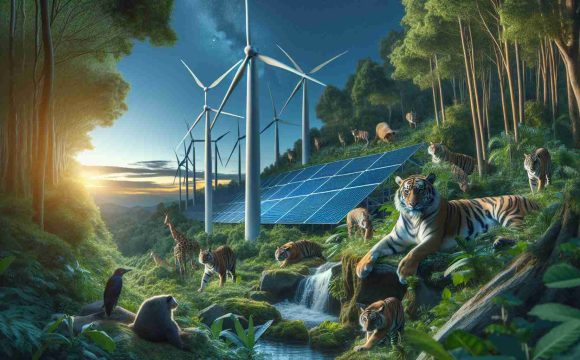Jimmy Carter’s Bold Energy Vision
In the summer of 1979, amidst an energy crisis, President Jimmy Carter made a historic move by unveiling solar water-heating panels atop the White House. With optimism in his voice, he predicted that the adoption of solar energy could either fade into obscurity or become a transformative journey for America.
As decades passed, many looked back on Carter’s presidency as a missed opportunity. In China, entrepreneur Huang Ming capitalized on solar technology, establishing solar heating dominance that saw panels adorning rooftops across cities. Ming regarded Carter as a true visionary, reflecting on the untraveled path America chose.
While Carter focused on energy efficiency and sustainability, his leadership coincided with rising environmental concerns. Despite the absence of the climate emergency awareness we face today, his administration recognized a reliance on oil as both harmful and unsustainable. Carter boldly stated that America was “the most wasteful nation,” calling for change in consumer behavior and government policies.
As election season approached in 1980, Carter rallied for a solar revolution that could have significantly altered energy consumption patterns. He envisioned solar energy fulfilling a fifth of national needs by 2000 and proposed substantial federal investments in renewable technologies. Yet, as political tides shifted, the vision of a sustainable energy future faded. Reagan’s presidency ushered in a new era, where environmental initiatives took a back seat to fossil fuel reliance, leaving us to ponder what might have been.
Revisiting Jimmy Carter’s Energy Legacy: Lessons for Today’s Sustainable Future
Introduction
In the era of urgent climate action and renewable energy advancements, the vision of former President Jimmy Carter during the late 1970s emerges as a poignant reminder of the potential of sustainable practices. As we analyze events from the past, we uncover insights and innovations that remain relevant in today’s context. This article delves into the implications of Carter’s emphasis on solar energy, its evolution, and current trends that resonate with his original vision.
The Pioneering Importance of Solar Energy
Jimmy Carter’s installation of solar water-heating panels on the White House roof was a symbolic act that underscored the importance of renewable energy. Today, solar technology has made remarkable strides, becoming one of the fastest-growing energy markets globally. According to the Solar Energy Industries Association, the U.S. solar market has grown by over 167% since 2010, showcasing a significant shift in public and governmental attitudes towards renewable energy.
Key Features of Modern Solar Technology
Modern solar solutions have progressed far beyond the basic panels of the 1970s. Here are some notable features:
– Efficiency: Today’s solar panels convert up to 23% of sunlight into electricity, a significant improvement over earlier models.
– Energy Storage: Advanced battery storage systems now allow consumers to store solar energy for use during off-peak hours or when sunlight is insufficient.
– Smart Technology: Integrating solar with IoT devices has enhanced energy management efficiency, allowing homeowners to track and optimize energy usage in real time.
Pros and Cons of Solar Energy
Pros:
– Environmental Benefits: Solar energy helps reduce greenhouse gas emissions, contributing to cleaner air and a healthier environment.
– Energy Independence: Utilizing solar energy decreases reliance on imported fossil fuels, enhancing national security and energy stability.
– Economic Growth: The solar industry creates jobs in manufacturing, installation, and maintenance, contributing positively to the economy.
Cons:
– Initial Costs: Despite decreasing prices, the upfront investment for solar installations can still be a barrier for many households.
– Weather Dependency: Solar energy generation is dependent on sunlight, which can be inconsistent in certain climates and during seasons.
– Space Requirements: Large solar installations require significant physical space, which may not always be feasible in urban environments.
Current Trends and Innovations
– Community Solar Projects: Increasingly, communities are adopting shared solar systems that allow multiple households to benefit from a single solar installation.
– Government Incentives: Federal and state tax credits, along with rebates, continue to incentivize the adoption of solar technologies across America.
– Bifacial Solar Panels: These innovative panels capture sunlight from both sides, offering higher efficiency and enhancing energy generation.
Insights from History: A Missed Opportunity?
Carter’s ambition to have solar energy account for 20% of the United States’ energy needs by the year 2000 highlights what was possible. As political focus shifted with the Reagan administration, so too did priorities away from renewable energy. The lessons learned reveal a pattern of political responsiveness to environmental needs, suggesting that sustained advocacy and awareness are crucial.
Looking Ahead: Future Predictions
As we approach a future increasingly shaped by renewable resources, predictions indicate that the solar market could continue to expand, potentially becoming the dominant source of energy by 2050. Significant growth in solar energy adoption is expected to stem from advancements in renewable energy technologies and supportive policies aimed at sustainability.
Conclusion
Reflecting on Jimmy Carter’s energy vision prompts a valuable discourse on our current trajectory towards sustainability. By learning from past policies and the ongoing advancements in solar technology, we can work towards realizing a greener future.
For more information on solar energy trends and technologies, visit Solar Energy Industries Association.







